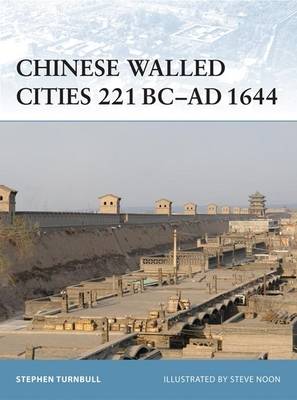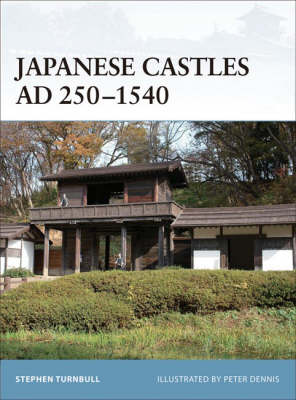Fortress
5 primary works • 6 total works
Book 5
The most familiar characteristics of the traditional Japanese castle are the huge sloping stone walls and the graceful yet militarily sophisticated structures built on top of them. This title covers the entire period of Japanese castle development from the first introduction of stone walls and tower keeps in the mid-16th century, through the period of the great sieges of Japanese history - Nagashino (1575), Kitanosho (1583), Odawara (1590), Fushimi (1600), Osaka (1615) and Hara (1638), the last of the battles that brought an end to a period of intense internal strife known as the Sengoku Jidai (Age of Warring Battles).
Book 19
The original forced conversion of pagan Livonia, what is now the Baltic states of Latvia and Estonia, was carried about by a military order known as the Brethren of the Sword. In 1236 this order was incorporated into the Teutonic Knights following a catastrophic military defeat. The knights had always consolidated their conquests through networks of castles and fortified places, and the Livonian Chapter of the Teutonic Order built castles of stone. This title covers the developmental and operational history of these fortresses over the length of the Middle Ages. It details how the Baltic fortifications of the Teutonic Knights evolved to reflect the changing nature of siege warfare and the increasing dominance of gunpowder in warfare.
Book 34
From the 10th century onwards the great monastic foundations of Nara and Mount Hiei maintained large armies of warlike monks, a practice that was later followed by other institutions. The tempestuous political rivalries that developed between the different orders of monks, and even factions within the same orders, ensured that these Buddhist temples and monasteries had to be securely sited and robustly defended. This title recreates these enormous fortified monasteries and shrines as they would have appeared at the time, tracing their development from the 10th century through to the Sengoku Jidai and the rise of the power of the shogunate under Tokugawa leyasu.
Book 57
The most extensive and famous example of fortification in the world, the Great Wall of China stretches for more than 4,000 miles across inhospitable terrain. Charting its development from construction in the 7th century BC through to the present day, this account reveals the true history of the wall, and explores the myths that surround it. Included are details of what it was like to live within the wall, the ideas behind the defensive systems, how it was garrisoned and patrolled, and a discussion of how effective it was against attack. Through extensive examination of both ancient and modern sources, color maps, artwork and photographs, this book illustrates why the wall is one of the great wonders of the world.
Book 84
It has been said in China that a city without a wall would be as inconceivable as a house without a roof. Even the smallest village invariably had some form of defensive wall, while the Great Wall of China was an attempt to build a barrier along the most vulnerable border of the entire country. Yet the finest examples of walled communities were China's walled cities, whose defensive architecture surpassed anything along the Great Wall. This book traces the evolution of the walled city from the 3,000 year old remains of the beaten earth walls of the Shang dynasty to the huge stone fortifications of the Ming dynasty. Stephen Turnbull, expert military historian, reveals the defensive structures from all the major ancient Chinese cities, and discusses how they protected entire communities, and not just castle dwellers, with colour artwork reconstructions, maps and archive photographs.
Dr Stephen Turnbull is internationally recognised for his research into and writing on Japanese military history. Here he applies his scholarship to an account of the evolution of Japanese defensive architecture and engineering, from early earthworks through to wooden and earth castles and, finally, the emergence of the stone towers that are so characteristic of the samurai. He also plots the adaptation of Japanese castles to accommodate the introduction of firearms. With unpublished photographs from the author's private collection and full-colour artwork, including detailed cutaways, this is an essential guide to the fascinating development of Japanese castles.





